
For collectors, floral and garden enthusiasts, I have listed the Latin and common English names of the flowers in this botanical photography artwork ‘Iris Wild Garden’. The Latin – also known as the botanical or scientific name – means that wherever you are in the world, the same language of flowers can be used to identify them.
‘Iris Wild Garden’ with its mix of cultivated and native flowers was sold as part of the ‘Wild and Garden’ limited edition fine art print collection.
Note: This botanical print is no longer available in the shop. Floral prints are released as limited edition prints and often just for a limited time.
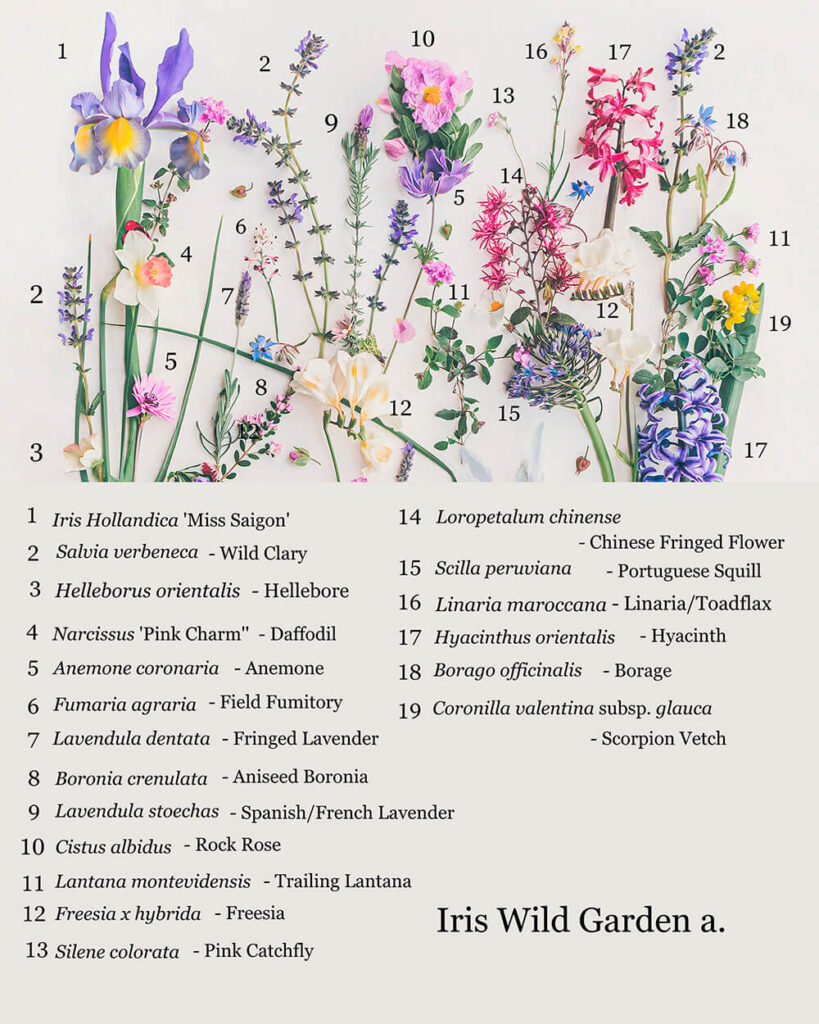
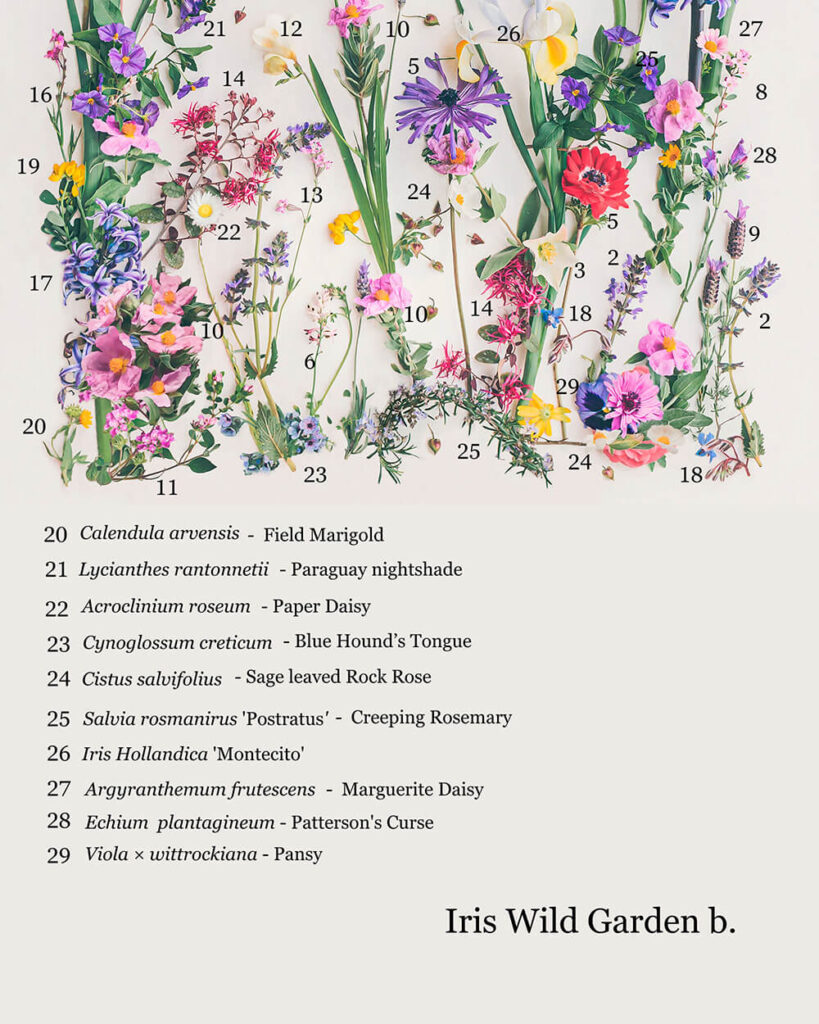
I love the ‘common names’ for flowers. Sometimes they relate to local folk lores or perhaps are influenced by their botanical names.
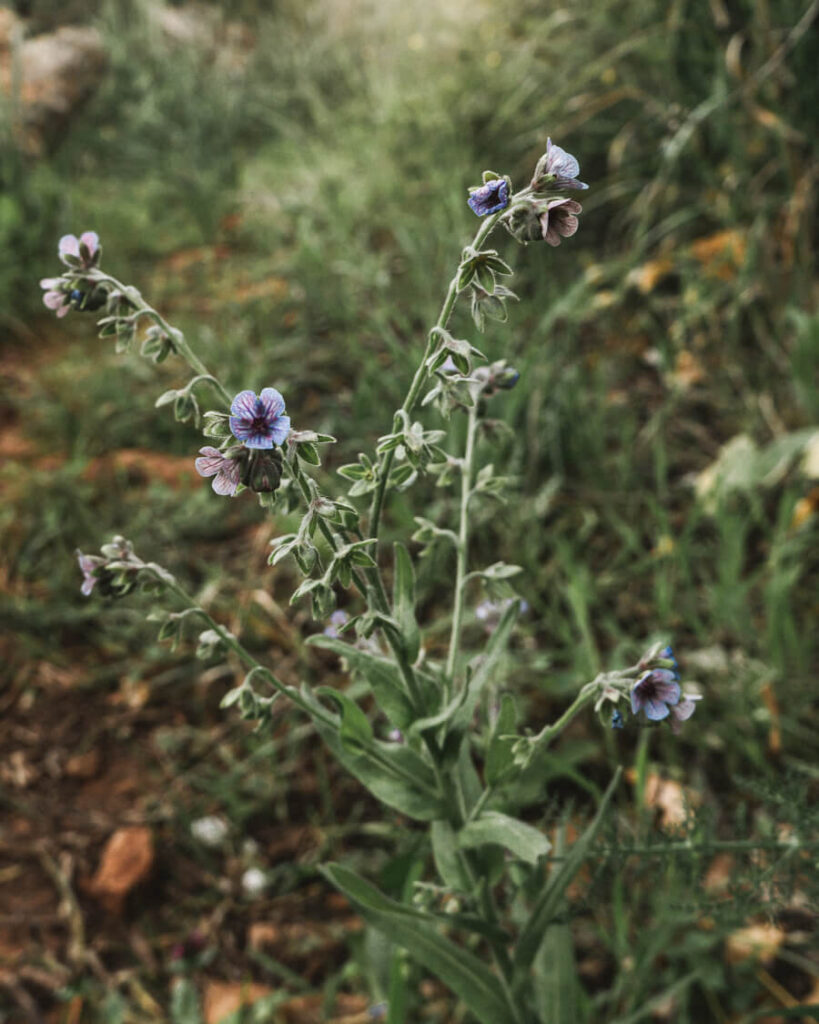
Cynoglossum creticum (no 23) is known as ‘Blue Hound’s Tongue.’ The scientific name derives from the Greek words for dog – ‘kynos’ – and tongue – ‘glossa’ – as the leaves resemble the shape of a dog’s tongue. It also has small blue and lilac flowers, all with tiny red veins.
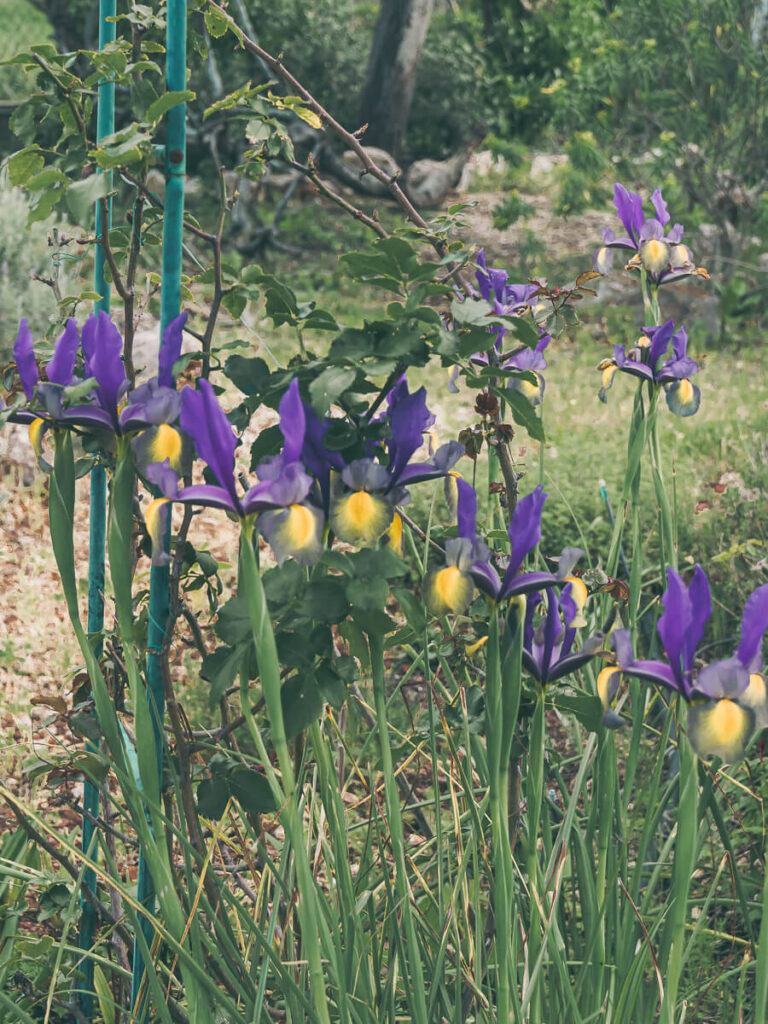
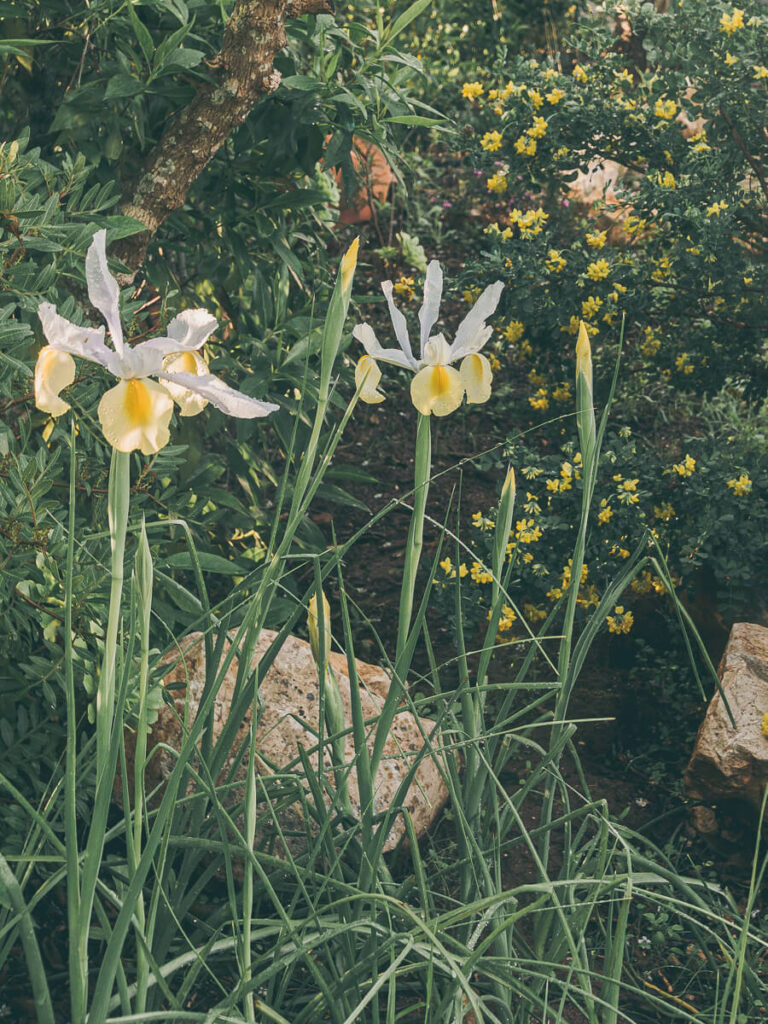
I always know when spring has arrived because my garden starts filling with Dutch Iris (no 1) – Iris × hollandica. They are a hybrid developed in the early 1900s in the Netherlands. They were created by crossing the wild Iris xiphium, native to Portugal and Spain, with the North African Iris tingitana.
I plant their bulbs in areas of the garden which get nourished by the winter and spring rain, while kept dry during the summer heat.
In the background of the white Dutch Iris ‘Montecito’ (no 26) is the Coronilla glauca (no 19) shrub (syn. Coronilla valentina glauca) with its yellow flowers. This plant is evergreen, flowering in the spring and early summer, and is perfect for planting in poor and stony soils.
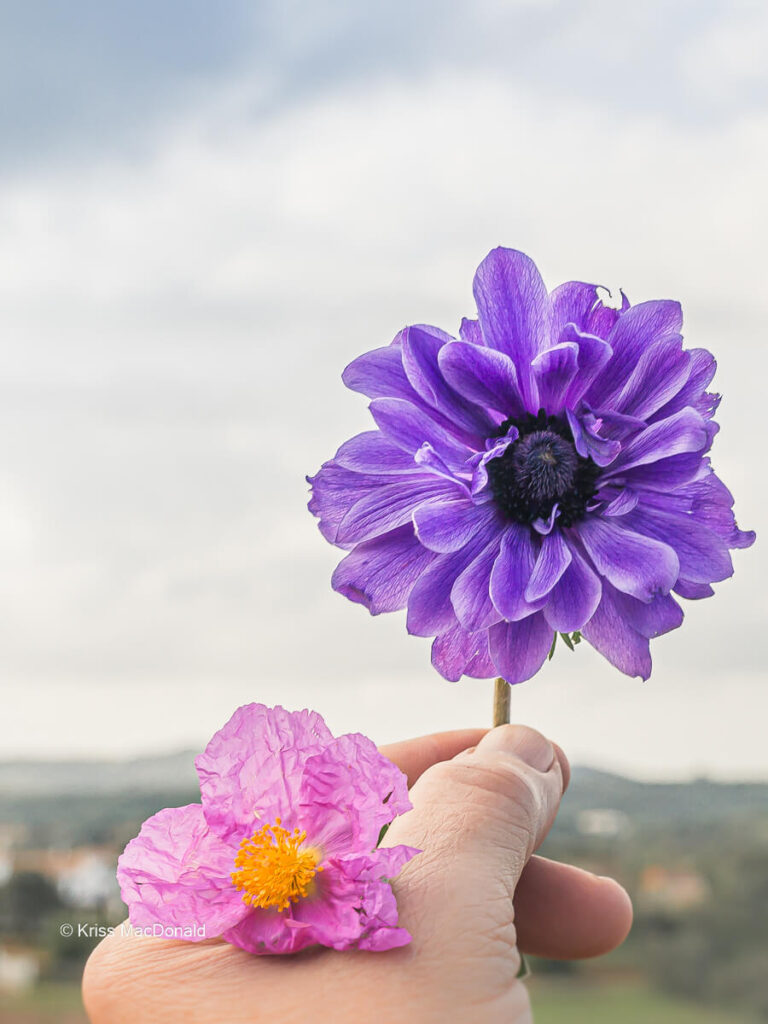
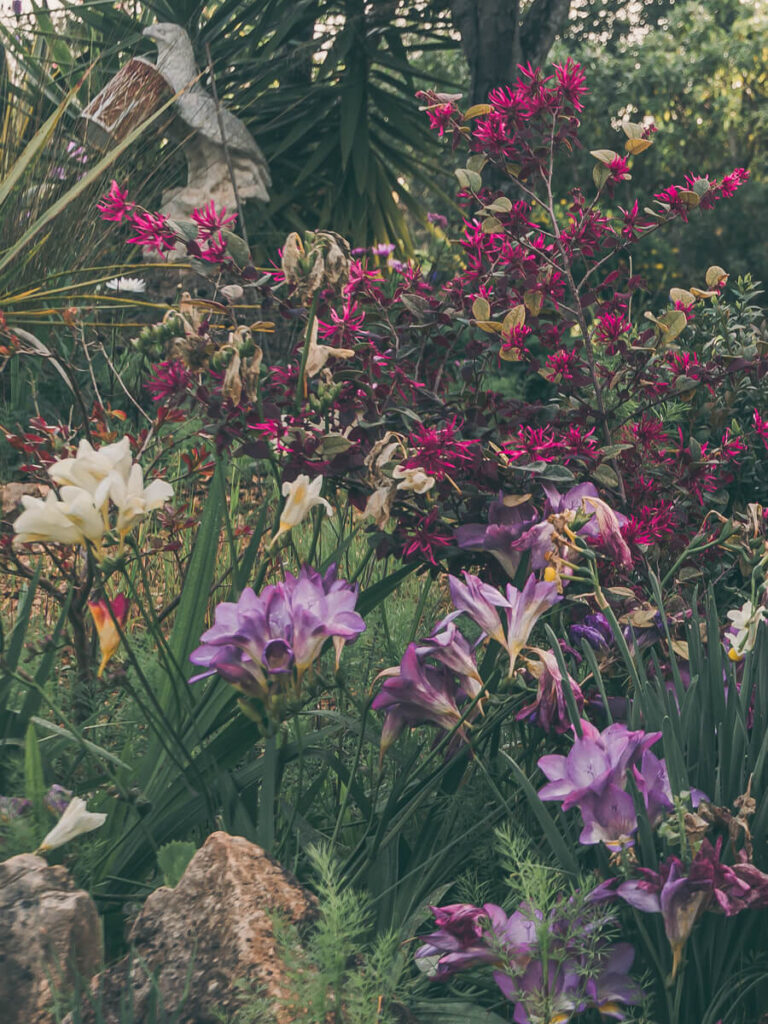
Other flowers which love the winter and spring rains and hot dry summer months, are Anemones (no 5) and Cistus ‘Rock Roses.’ In my hand here is the pink Cistus albidus (no 10).
I also grow many plants from other temperate regions in the world. In the foreground of the flower bed are white and purple Freesia (no 12), native to South Africa. After the Freesia plants flower, I wait until the foliage has wilted and turned yellow before cutting them back, while leaving their corms sleeping in the soil for next year’s flowering. If you live in a cool climate, you can grow them as annuals.
In the background is the Loropetalum chinense (no 14) plant, a native of China – thus commonly known as the ‘Chinese fringe flower’. In the spring it becomes covered in the bright pinkish-red fringe shaped flowers. It’s part of the Witch Hazel family.
Most of the flowers in my botanical art photography, like ‘Iris Wild Garden’, are either grown in my garden or collected from our field and the countryside around me.
You can view more prints in the ‘Wild and Garden’ collection – although they also might be gone soon. I have also written in the blog about the two photo art statement pieces ‘Wild Spring Meadow’ and ‘Ranunculus Garden’ that feature in this collection.
